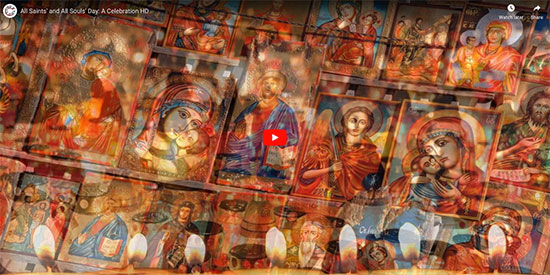In Christianity, All Saints’ Day (also called All Hallows’ Day, Hallowmas, and the Solemnity of All Saints) honors saints and martyrs, both known and unknown, with special church services, prayers for the heavenly dead, and visits to cemeteries. Originally celebrated at the end of Lent, in the the eighth century Pope Gregory III moved All Saints’ Day to November 1st, perhaps to coincide with pagan celebrations occurring at the same time.
The following day, November 2nd, is dedicated as All Souls’ Day, to commemorate souls in Purgatory, including unbaptized babies and “the Faithful Departed,” those who have been baptized but have died before making their confession. Black and purple are the liturgical colors of this day and deceased relatives are typically remembered and their graves visited. It is believed that, through prayer, the slightly less saintly among our loved one may be prepared for Heaven.
Soul Cakes, rounded scone-like biscuits prepared with sugar, nutmeg, ginger, cinnamon and allspice, have fallen from favor — but in the eighth century they were given to beggars in exchange for prayers for the dead, one soul per cake. That’s some serious trick-or-treating!
The modern Dias de los Muertos (Day of the Dead) is a combination of All Saints’ and All Souls’ Days celebrated on November 1st and 2nd in Mexico, Latin America, and U.S. Latino communities. A distinctly Aztec spirit remains in the holiday, dating back at least 3000 years. Los angelitos, the spirits of children, come out at midnight on the 31st. Adult souls take their place from noon November 1 until the following day.
Along with All Hallow’s Eve — Hallowe’en — these three days comprise the “Days of the Dead,” a triduum of feasts also called Allhallowtide. A Triduum is a religious observance lasting three days, such as the Paschal Triduum, which lasts from Good Friday through Easter Sunday in Spring.
